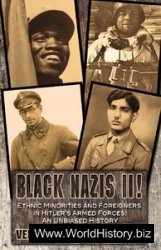General Anthony Wayne led a successful assault on the British position at Stoney Point on the west bank of the Hudson River at King’s Ferry on July 16, 1779. Defended by 500 British soldiers under the command of Colonel Henry Johnson, Stoney Point looked impregnable since it sat on a peninsula and was atop a steep hill 150 feet above the river. Moreover, the landward approach was through a swamp. Wayne planned a midnight assault and divided his light infantry corps into three columns. A small contingent would feign an attack from the landward side, firing their weapons and making as much noise as they could. The other two columns would advance in total silence and scale the heights along the river with unloaded muskets and fixed bayonets. The attack on the two wings was preceded by small detachments to clear the abatis and other obstructions. The plan worked to perfection, and the men climbing both sides of the hill arrived almost simultaneously and overwhelmed the British garrison. After a brief but furious fight, Johnson surrendered. Of the 1,300 men in Wayne’s force, 15 were killed and 85 wounded. The British lost 20 killed and 442 captured (including 74 wounded). The victory was an important boost to the morale of the Continental army, although three days after the battle, George Washington ordered Stoney Point abandoned since he did not want to detach too many troops to defend a position that was vulnerable to British army and naval attack.
The U. S. House of Representatives, where he opposed the embargo of 1807 and earned the distrust of many leading Democratic-Republicans, including Jefferson himself. He then returned to Massachusetts, where he served again in the legislature.
On November 18, 1811, President James Madison appointed Story an associate justice of the Supreme Court of the United States. At age 32, he was the youngest person ever appointed to the Supreme Court. He remained on the Court for 34 years. As a justice, Story quickly allied himself with chief justice John Marshall. Perhaps the most important majority opinion he wrote was in Martin v. Hunter’s Lessee (1816) upholding the Supreme Court’s jurisdiction over the state courts. Story also wrote the Court’s opinion in the case of the Amistad, directing that the alleged slaves who seized that vessel be freed and returned to their homes in Africa. In 1835, when John Marshall died, Story was widely thought to be the most capable successor as Chief Justice, but President Andrew Jackson opted not to make the appointment, largely because he considered Story dangerous to the cause of states’ rights.
Story was extraordinarily productive. His position as Supreme Court justice allowed him some free time, and in 1829 he decided to teach at Harvard Law School. Between 1832 and 1845, he published a series of commentaries covering such diverse subjects as the Constitution, equity jurisprudence and pleading, and bailments. These gained Story an international reputation and a fairly large income. He died on September 10, 1845.
Further reading: R. Kent Newmyer, Supreme Court Justice Joseph Story: Statesman of the Old Republic (Chapel Hill: University of North Carolina Press, 1985); William Wetmore Story, Life and Letters of Joseph Story (Boston: Little, Brown, 1851).
—Lindsay Robertson
Further reading: Paul David Nelson, Anthony Wayne: Soldier of the Early Republic (Bloomington: University of Indiana Press, 1985).
Story, Joseph (1779-1845) associate justice of the Supreme Court
Joseph Story was the leading academic on the early Supreme Court of the United States. Born in Massachusetts on September 18, 1779, and educated at Harvard, Story studied law in the office of Samuel Sewall, later chief justice of the Supreme Court of Massachusetts. In 1801 he began practicing law and was soon elected to the Massachusetts legislature. An avowed Democratic-Republican (Jeffersonian), in 1808-09 he represented Massachusetts in
Stuart, Gilbert (1755-1829) painter Gilbert Stuart, a provincial artist in the 1770s, became the leading portraitist in the new nation, especially renowned for his paintings of the revolutionary hero and president, George Washington. Stuart’s father operated a snuff mill in North Kingston, Rhode Island, where he was born in 1755. The family moved to Newport when he was a young boy where he met the traveling artist Cosmo Alexander, who provided the young Stuart with lessons and employment as his assistant on his travels to Pennsylvania, Virginia, and Scotland where Alexander’s unexpected death in 1772 left Stuart stranded. Stuart made his way back to Newport and continued his portrait work. When his Loyalist father moved to Nova Scotia in 1775 to avoid the revolutionary crisis, the young patriot artist departed for
London where he struggled for work, although Benjamin West helped him with lessons and employment. His Self Portrait of 1778 shows his increasing knowledge of English and European styles and models. He began to achieve success and commissions from prominent people but was forced to flee London in 1787 to escape his creditors.
Stuart arrived in New York in 1793 to seek the patronage of the new nation’s merchants, politicians, and Revolutionary War (1775-83) heroes. Armed with a letter from Chief Justice John Jay, he secured a sitting of President George Washington in Philadelphia in 1795, the first of several Stuart paintings of Washington. Martha Washington commissioned another likeness, the George Washington Athenaeum Portrait, (1796, National Portrait Gallery). He worked in Philadelphia for nine years before moving briefly to the new capital, Washington, D. C., in 1803, then leaving for Boston in 1805, where he remained for the rest of his life.
Stuart’s cosmopolitan painterly technique featured rapid and facile brushwork along with subtle blending of color to create an atmospheric style. However, the artist had difficulty finishing his sittings and often was perilously in debt. He died insolvent in Boston in 1828.
See also art.
Further reading: Carrie Rebora Barratt and Ellen G. Miles, Gilbert Stuart (New York: Metropolitan Museum of Art, 2005); James Tomas Flexner, Gilbert Stuart: A Great Life in Brief (New York: Knopf, 1955).
—David Jaffe
Stuart, John See Bute, John Stuart, earl of.
Suffolk Resolves (September 9, 1774)
In an effort to provide a course of action to resist further imperial regulation, Samuel Adams had the county convention in Suffolk, Massachusetts, draw up a series of resolves opposing the changes in Massachusetts government dictated by the Coercive Acts (1774). Written by Joseph Warren, the resolves were delivered to the First Continental Congress by Paul Revere on September 16, 1774. As its first official action, Congress endorsed the Suffolk Resolves, thus assuming a supervisory role over the resistance to the Coercive Acts in Massachusetts.
The resolves began with a fiery preamble that referred to Frederick, Lord North as having “the arbitrary will of a licentious minister,” and decried the British soldiers in Boston as “military executioners.” The Coercive Acts were labeled “murderous.” The resolves also outlined a series of measures intended to circumvent or nullify the British legislation. Tax collectors were not to send their receipts to the treasury. The colony’s councillors, now appointed by the governor instead of elected, were urged to resign. Everyone was to ignore the action of judges appointed with new commissions, and all judicial orders were not to be followed. The Suffolk Resolves also called for a nonimportation movement. As radical as these steps appeared, many in Congress saw them as following a moderate course. All measures were viewed as defensive, and the resolves reasserted the colonial “affection for his majesty.” There was no call to drive the British troops out of Boston, and there was no unilateral assumption of the previous colonial government. The Suffolk Resolves were an important first step in Congress’s emergence as a guiding force in the crisis caused by the Coercive Acts, and they helped to prepare the way for the Association that led to a nonimportation movement that further aggravated the imperial crisis.
Further reading: Jack N. Rakove, The Beginnings of National Politics: An Interpretive History of the Continental Congress (New York: Knopf, 1979).




 World History
World History









